The Outer Banks of North Carolina, a thin line of islands representing the easternmost part of the state, are hit by multiple nor'easters and hurricanes every year, leading to oceanfront homes collapsing into the sea and causing millions of dollars to be spent on maintaining Highway 12, which runs along the islands.
Storms don't even have to be particularly close or strong to wreak havoc on the Outer Banks. Hurricane Joaquin in 2015 tracked more than 500 miles east of Hatteras, North Carolina, but waves and surge from the storm still caused $2.3 million (USD 2015). Hurricane Erin, at half that distance, caused waves and coastal flooding that closed Highway 12 for three days in mid-August.
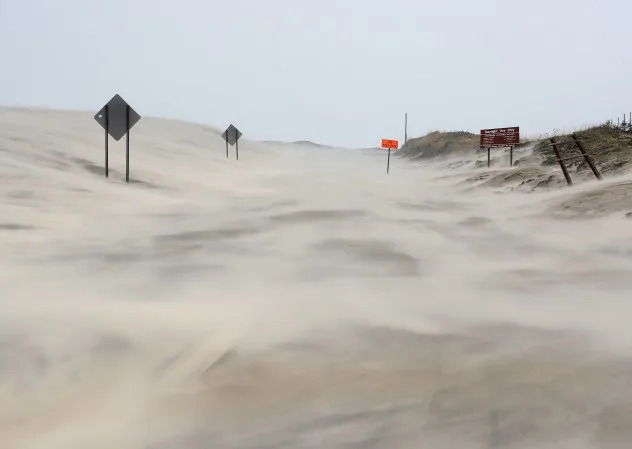
Highway 12 has cost $43 million since 2012 to battle storm damage
It's a struggle to maintain Highway 12, the two-lane road that runs along the islands, which are at one point only 300 feet wide. WSOC-TV found that regular maintenance averages $1 million per year, but when storm damage is included, the state has spent more than $43 million since 2012 just to maintain the highway.
Hurricane Sandy in 2012 had one of the most expensive price tags for the road-nearly $30 million (2012 USD), and that followed $11 million damage from Hurricane Irene the year before.
Those figures don't include the $145 million spent to permanently detour Highway 12 away from the narrowest section of the beach, onto a new 2.4-mile bridge, built between 2018 and 2022.
13 homes have disappeared in the last 5 years at Rodanthe
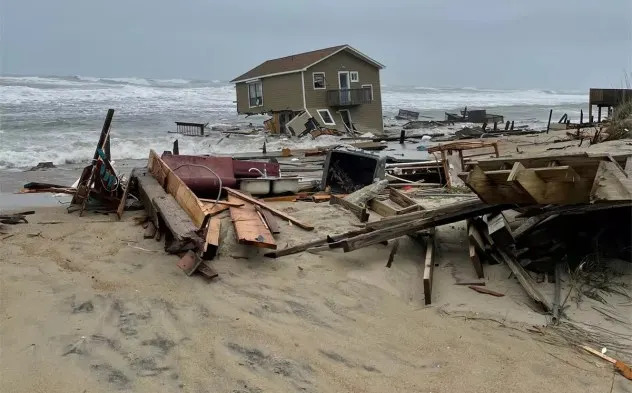
Homes are also crumbling into the ocean on the Outer Banks frequently. Eleven homes in Rodanthe, North Carolina, have collapsed since 2020, the National Parks Service says, mostly during big storms. Two more were demolished as part of a pilot program to keep them from collapsing.
Historic satellite imagery from Google shows only one home remaining in Rodanthe in 2016, where seven once stood in 2009.
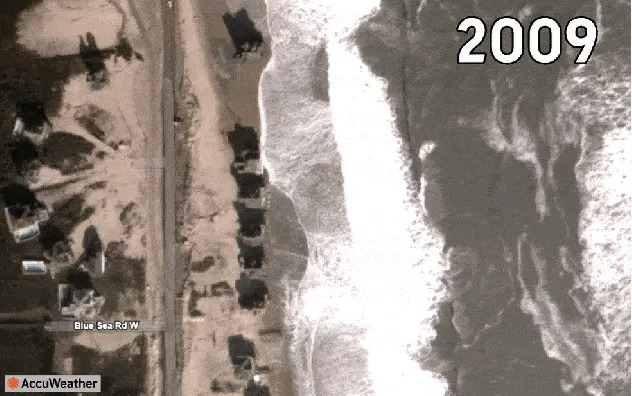
Rapid erosion has robbed 675 feet of beach since 1980
The beachfront properties were not always as close to the surf as they are today. In the location of that last remaining home, AccuWeather found that the shoreline moved inland more than 675 feet between 1980 and 2020, according to North Carolina Coastal Management oceanfront vegetation lines. That's 16.9 feet per year, confirming the "more than 15 feet per year" that Dare County reported after a 2023 study.
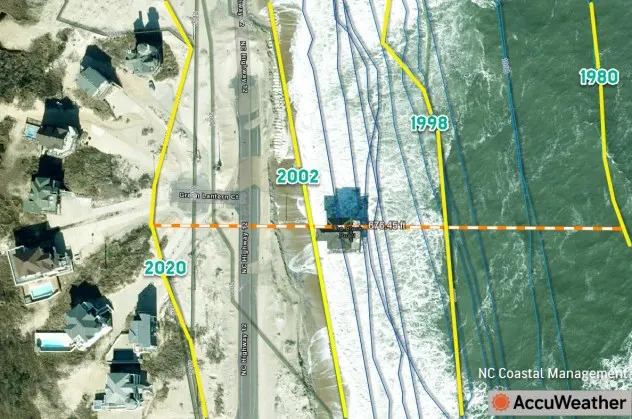
The remaining home still standing today was built in 1987, when several hundred feet of beach were between it and the water. Zillow property lines, likely surveyed decades ago, show between half and two-thirds of the surrounding land parcels are now in the ocean, with eight parcels on Corbina Drive completely underwater.
Why the Outer Banks is so vulnerable to coastal storms
Most of the vulnerability is geographic. The islands are only hundreds of feet wide in some areas, and can be easily inundated by storm surge from both the sound and ocean sides. There are no permanent protections, such as seawalls, anywhere in the Outer Banks, just sandbagged dunes that an angry ocean can easily defeat.
Eastern North Carolina sticks out into the ocean, jutting out into a corridor that strong storms, not weakened by other land, traverse each hurricane and nor'easter season. A similar problem exists for Cape Cod, Massachusetts.
Climate change isn't helping, with rising seas making coastal erosion worse and a warming earth making stronger hurricanes near the southeast U.S. coast more likely.
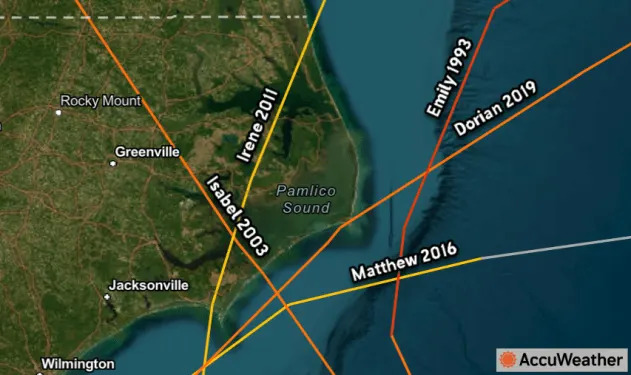








Comments